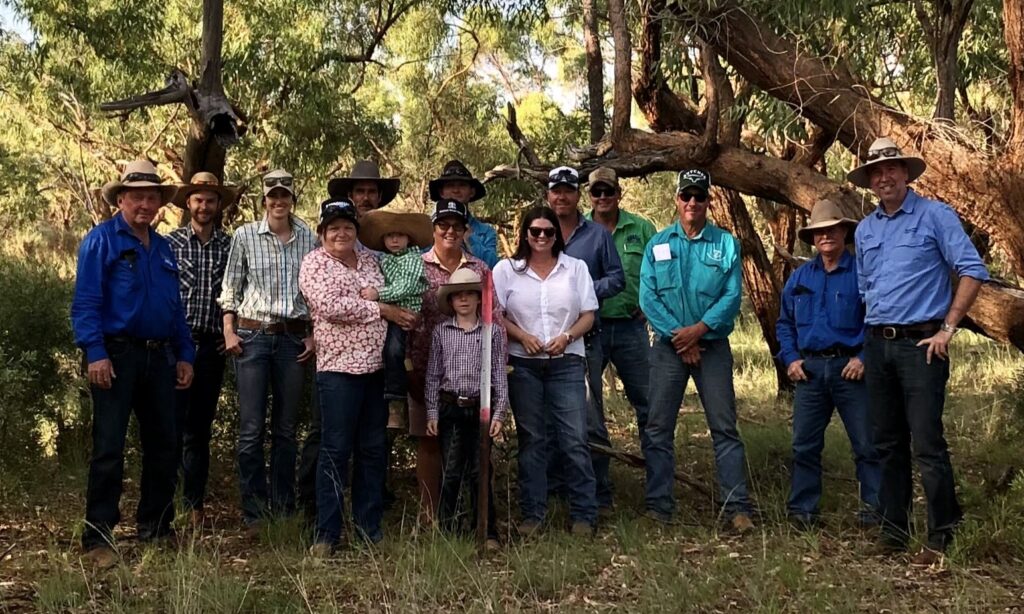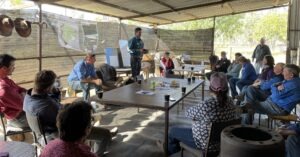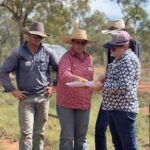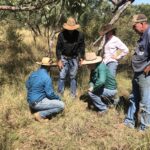Jumping the fence: the Torrens Creek Producer Group
 Instead of looking over the neighbour’s fence, ten years ago a group of neighbours in the Torrens Creek district decided to jump the fence, get together and learn about what each other was doing. Not only did it showcase different ways of managing cattle and country, it gave them the opportunity to throw ideas around and discuss management techniques and strategies.
Instead of looking over the neighbour’s fence, ten years ago a group of neighbours in the Torrens Creek district decided to jump the fence, get together and learn about what each other was doing. Not only did it showcase different ways of managing cattle and country, it gave them the opportunity to throw ideas around and discuss management techniques and strategies.
As it goes, busy schedules and workloads meant group get-togethers were becoming less frequent, and these were starting to only centre around responding to a bushfire on whoever’s property was alight that year.
Fast track to 2020, and David and Donna Rankine at Bunuro Station, south of Torrens Creek, started a producer demonstration site with the Department of Agriculture and Fisheries (DAF), demonstrating grazing management strategies that improve land condition, and support high animal performance. It was important to the Rankine’s that local producers were involved and engaged with the demonstration site. With relationships existing between the core group of neighbours, it made sense to revitalise the local neighbour group, formally becoming the Torrens Creek Producer Group.
There are now 7 to 10 properties involved, most of whom have been neighbours for over 15 years. This brings a deep level of trust and respect between group members, allowing robust and insightful discussions. A recent visitor to a group meeting stated, “they all seem to have an opinion”.

Charlie and Andreá Holzwart, from Rangeside Station, were involved in the initial group, and have always seen value in the concept. For Charlie, the real value of the group is the people involved, and how honestly people share information about their business and practices. They are enjoying the new support being offered to the group, which is allowing for more consistent and frequent meetings.

The group gets together twice a year, with a different property hosting each meeting. The topics vary, depending on what the group, and host would like to cover – hosting does come with some privileges! A property tour is a staple at every meeting, which not only provides a better understanding of the host properties operation, it also gives the host the opportunity to gain some feedback and insights from other group members.
One of the benefits of meeting on property is that it allows people to see firsthand the different management techniques others are trialling or implementing, giving them more confidence to give something new a go at home.
Kirby and Tammy Smith moved into the district a few years ago, after purchasing Spring Hill Station. Being relatively new to the region, they have seen the value in being connected with those around them and tapping into the experience of others. Since becoming involved with group, they have been making some changes to their grazing management, including adjusting stocking rates and incorporating rest periods into paddocks. Kirby revealed that he picks up something new at every meeting.
Highlights for the group:
- visiting the grazing demonstration site at Bunuro
- hearing about current research trials
- learning from guest speaker Bob Shepherd
- visiting neighbouring properties
- a chance to catch up without fighting a fire.

Looking forward, the group is investigating funding options for some formalised training courses, or a potential study tour to visit properties in another region. There are still a couple of properties that are yet to host a meeting, and once the first lap around the neighbours is done, it will no doubt be time to go around again to see what changes people have made.
For the Torrens Creek Producer Group, jumping the neighbours, or in this case, all of the neighbour’s fences, is proving to be a great way to learn, gain new ideas, and to stay in touch.
If the grass does look greener next door, why not ask if you can go over and find out why, you just never know where that might lead.
If you have an idea for a producer group and need some assistance, get in touch with your local beef extension officer.
Written by Bec Clapperton, Department of Agriculture and Fisheries (DAF)